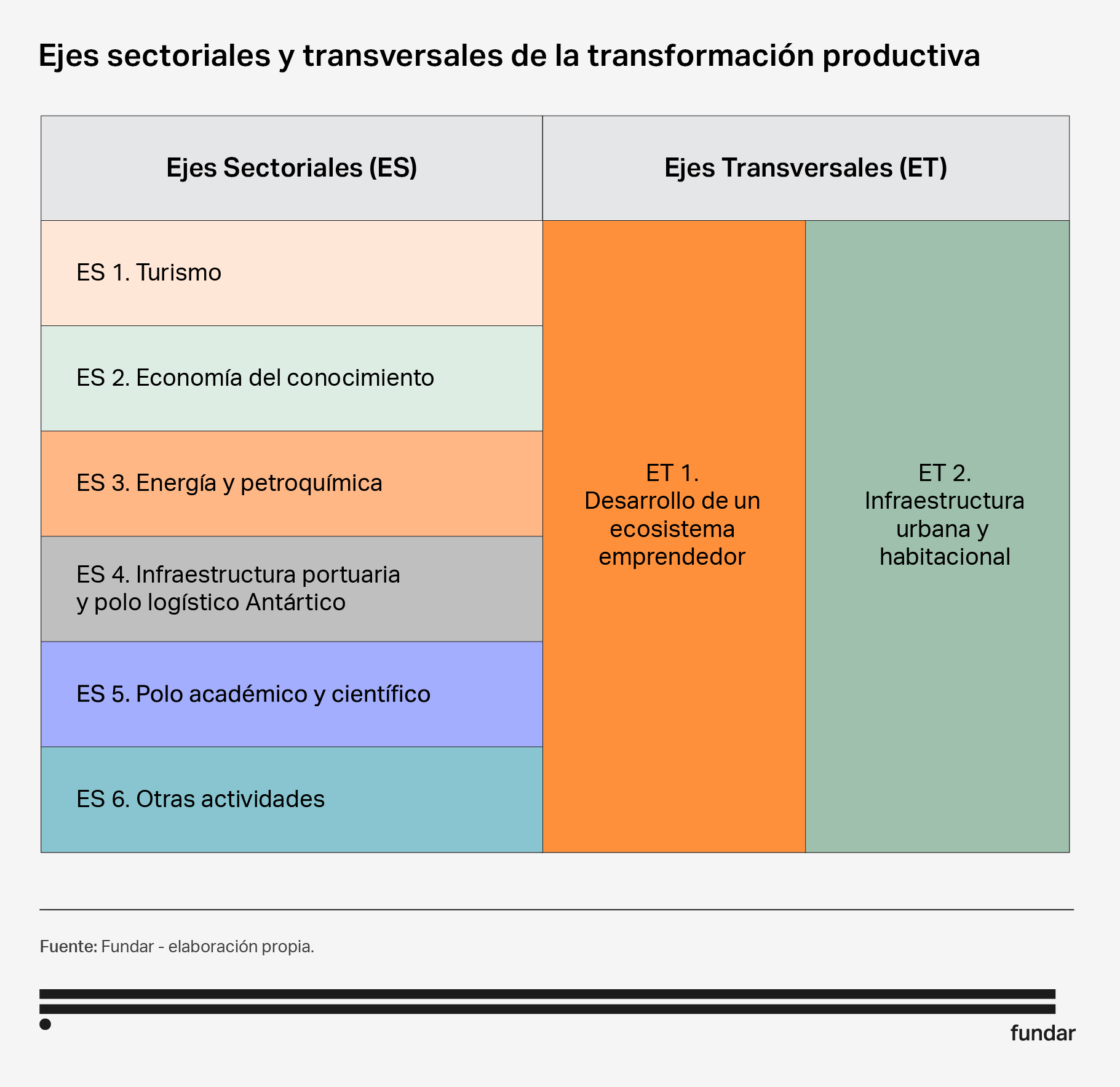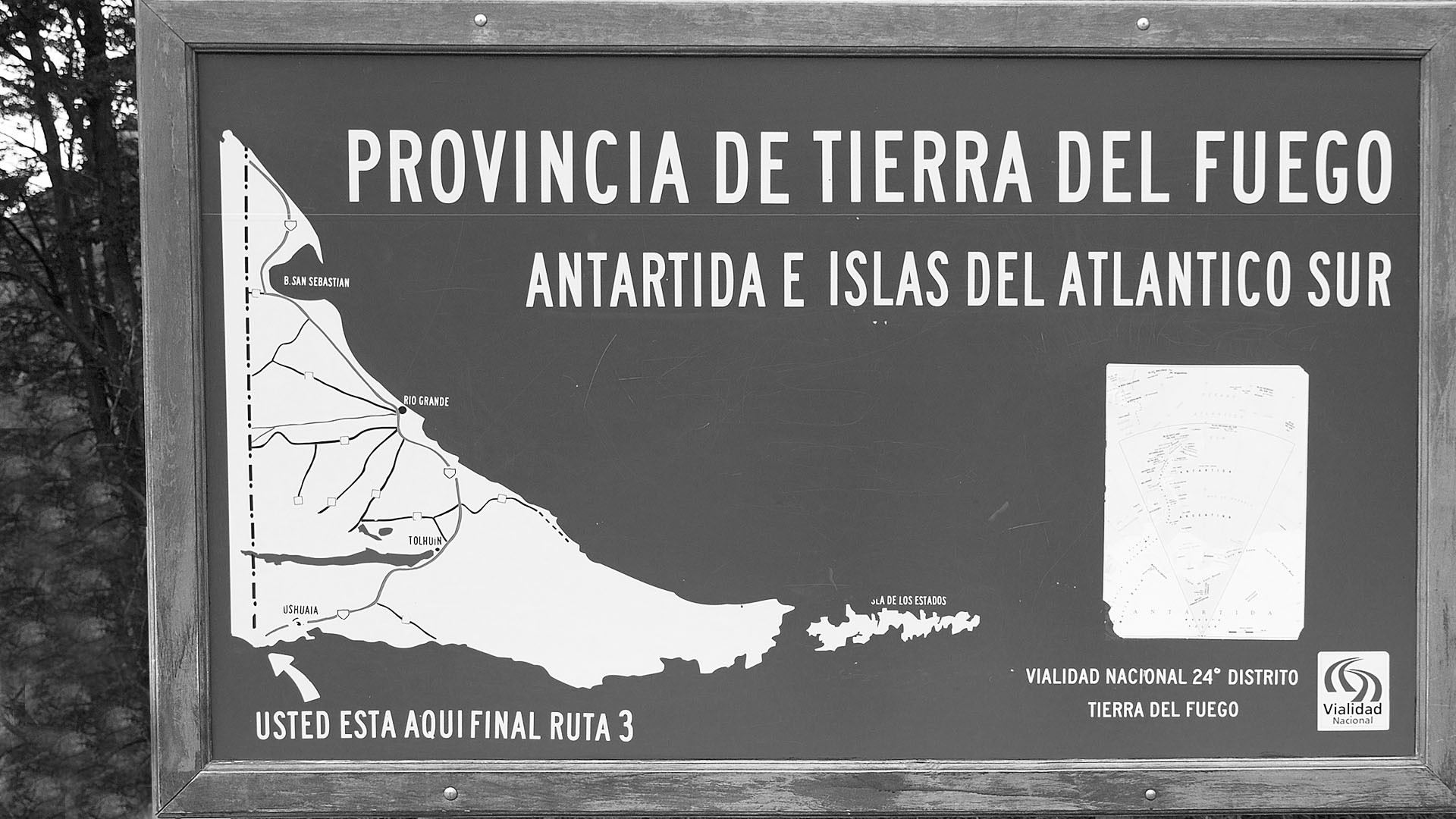The savings resulting from a potential reformulation of the Tierra del Fuego industrial sub-regime —as outlined in Paper 2— should be allocated towards promoting productive diversity in Tierra del Fuego and starting a gradual process for building a more prosperous province, one less dependent on the support and discretionary power of the federal government. This Paper 3, which completes the series Towards a possible productive transformation in Tierra del Fuego, addresses the prospects and challenges for promoting new activities to expand Tierra del Fuego’s productive matrix, along with the social protection and labor reconversion priorities that should encompass this productive transformation process.
Towards a possible productive transformation in Tierra del Fuego
Multiple reasons led to the implementation of the current regime in Tierra del Fuego, including its distance from the country’s main production and consumption hubs, severe weather conditions, and geopolitical tensions. The core argument was that, absent targeted and active state intervention, the territory lacked the conditions necessary to attract a significant population and promote economic activity.
As explained in Paper 1 of this series, the Regime implemented by Law 19,640 successfully achieved its objective of driving significant growth in both population and economic activity through industrial employment. However, the so-called “industrial sub-regime” —for which Law 19,640 failed to establish specific details which were subsequently set out in implementing regulations— implies substantial annual fiscal costs and has led Tierra del Fuego’s economy to focus on a few limited industries, resulting in a lack of incentives for local value creation.
In recent years, there have been several efforts, both academic and political, to transform the province’s productive structure. Both reflect on the sectors and conditions that could lead to a change in the productive matrix in order to reduce the province’s dependence on fiscal support and promote the exploitation of local competitive advantages.
This paper moves in that direction. It analyzes and presents a possible path for the diversification of the productive matrix of Tierra del Fuego by drawing on a set of existing natural conditions and another set of conditions to be developed.
This Paper suggests that the agenda for gradual productive transformation of Tierra del Fuego should focus on two areas: industry and socio-labor conditions. The industrial dimension should be based on those economic activities that could potentially become dynamic and sustainable, while the socio-labor dimension, in turn, would focus on preserving the income of those individuals and families that could be affected by the transformation of the productive matrix, and supporting job reconversion for workers. The viability of the productive transformation in Tierra del Fuego depends to a large extent on the success of both aspects performing in tandem.
Any productive transformation of this magnitude poses a huge inter-temporal challenge: it requires generous, stable and multi-year financing to foot substantial public and private investments, both in productive policies and in related social protection and labor reconversion policies. Accordingly, most of the fiscal savings potentially secured through the reform of the industrial subregime —Paper 2 of this series presents one of many possible alternatives— should be reallocated to a fund to finance both productive investment and the social and labor agenda.
This is not only or purely an economic issue: this transformation is first and foremost a political challenge. We propose that such a fund be jointly managed by the Federal Government and the Province of Tierra del Fuego, so that local stakeholders —especially the provincial government— can play a leading role in defining the fund’s strategic priorities and their implementation.
Tierra del Fuego's productive diversification potential (industry dimension)
The resource base available in the province should be strengthened and stimulated to converge, articulately and complementary, to build a knowledge-intensive structure based on the newly gained competitiveness, less dependent on tax incentives and designed to transcend its current limitations, resulting today from an over-specialization on a few goods. The industries identified as having the greatest potential for growth (sectoral axes) require active public policies that guarantee the public goods necessary to complement, facilitate and promote their development (cross-cutting axes).

Identify emerging sectors to promote (Sectoral axes)
The analysis shows that the key is to promote and strengthen two sectors that already have a certain degree of development: tourism and the knowledge economy. It is also important to promote activities linked to downstream value creation in the hydrocarbon industry (petrochemicals), as well as to improve the logistical infrastructure in order to streamline cargo transportation in the province and develop logistics services associated with Antarctic activities. Finally, it is a priority to support scientific-academic activities with a view to generating a critical mass of researchers and projects associated with Antarctic, oceanic, sub-Antarctic and environmental issues.
Facilitating conditions for development (Transversal axes)
One of the most critical structural problems is housing. Tierra del Fuego has a long history of housing issues; the migration process has been very rapid, in addition to the fact that many properties are reserved for temporary rental to tourists, which creates a shortage of housing supply. If this aspect is not guaranteed, all other incentives will prove insufficient to stimulate other sectors that are key for the expansion of Tierra del Fuego’s productive matrix. Additionally, the profile of migrants who arrived after Law 19,640 was mostly salaried workers. A second factor to be addressed is the development of a business ecosystem conducive to the emergence of new productive and service SMEs.
Investing to create jobs
The estimated investment to tackle all of these axes of sectoral diversification would amount to approximately 6 billion dólars over a ten-year period, considering both public (35%) and private (65%) investments. The expansion of the productive matrix would have a significant impact on employment: the forecast suggests that 7,500 new jobs would be created over this period, concentrated mainly in the tourism and knowledge economy sectors, but also in a wide variety of sectors with sustainable growth potential. Thus, if supported by productive development policies that contribute to the development of a diversified productive matrix of dynamic sectors, a reformulation of the industrial sub-regime such as the one proposed in Paper 2 of this series —or any other with significant sector impact— should not affect employment.
Social protection program and stakeholders involved in the productive transformation (socio-labor dimension)
Any productive transformation process involving a profound reformulation of the industrial sub-regime could have negative social impacts in Tierra del Fuego in the near and intermediate term. Therefore, such a reformulation of the industrial sub-regime in Tierra del Fuego will be politically and socially viable if and only if there is a strong national and provincial political will to implement a robust social protection and labor reconversion program.
Secondly, in order to be sustainable, a reformulation should not simply be conceived as a set of measures aimed at compensating those who may be affected. A comprehensive policy and institutional design strategy is required to address the interests of all stakeholders and involve them in decision-making. In this sense, productive transformation in Tierra del Fuego is not only or mainly an economic issue: it is above all a political challenge.
Possible alternatives for a social protection and labor reconversion program
Any feasible productive transformation in Tierra del Fuego requires a deliberate effort to articulate the challenges of sector diversification and the need to address socio-labor dynamics. It is essential to acknowledge the rights of families in Tierra del Fuego who would be directly affected by changes to the productive matrix, and to identify ways to protect their income and standard of living.
To be successful, any social protection and labor reconversion program must be designed so as to facilitate the reinsertion of those affected in new genuine and high-quality jobs related to the growth of developing industries. It also requires a set of long-term measures for economic support while simultaneously minimizing the number of migrants to the continent.
Shared governance of productive transformation
This paper considers it essential to channel most of the resources resulting from the reformulation of the industrial sub-regime into a fund with guaranteed capability to finance investments in several areas of priority public works and thus facilitating the robust growth of the emerging industries identified in this paper.
A similar fund already exists. The Fund for the Expansion of the Productive Matrix of Tierra del Fuego (FAMP) was established in 2021 to formalize and finance an investment process in the province. This can actually be interpreted as a first milestone towards a change in the productive structure unprecedented in the island. However, this proposal exceeds largely the scope defined by the regulations governing the FAMP and requires the development of a fund significantly greater in terms of financing capacity. The proposed fund should ensure financing for public works with a scope beyond production solely but also have a direct impact on the quality of life of people in Tierra del Fuego.
Regarding the governance of this fund, establishing a dialogue table is essential. This forum should have institutional autonomy and adopt a tripartite framework, encompassing administrative and jurisdictional entities at the national, provincial, and municipal levels, alongside business chambers and trade unions. The dialogues should aim at achieving consensus on the terms of the productive transformation of the province and the associated social protection and labor reconversion program. The objective of holding a roundtable of this nature is to develop sustainable sector visions through consensus-building.
The implementation of the transformation proposed would require the public sector to build political, social and institutional consensus, design new rules and regulations, ensure the availability of funds and, above all, strengthen state capacities. Ignoring the importance of these challenges implies ignoring the complexity of an economic and political operation of this magnitude.
This document completes the series Towards a possible productive transformation in Tierra del Fuego. Paper 1 of the series offers a diagnosis of the regulatory framework, the economic structure and the fiscal cost of the current industrial sub-regime, while Paper 2 elaborates a proposal for the reformulation of the industrial sub-regime and analyzes the expected impact on production, prices, employment and fiscal cost through a simulation model.

